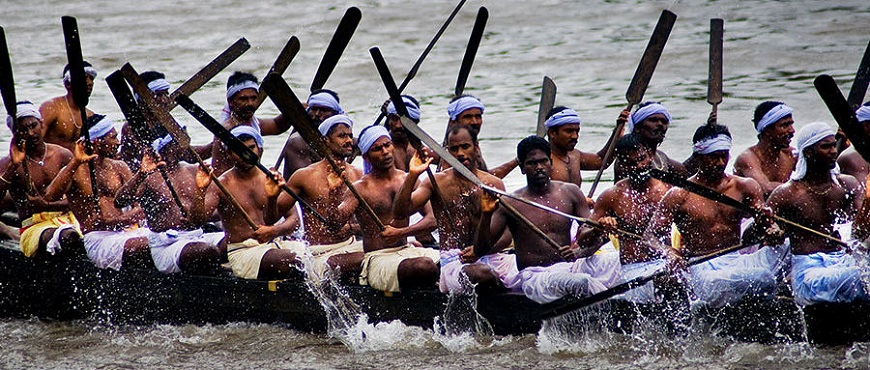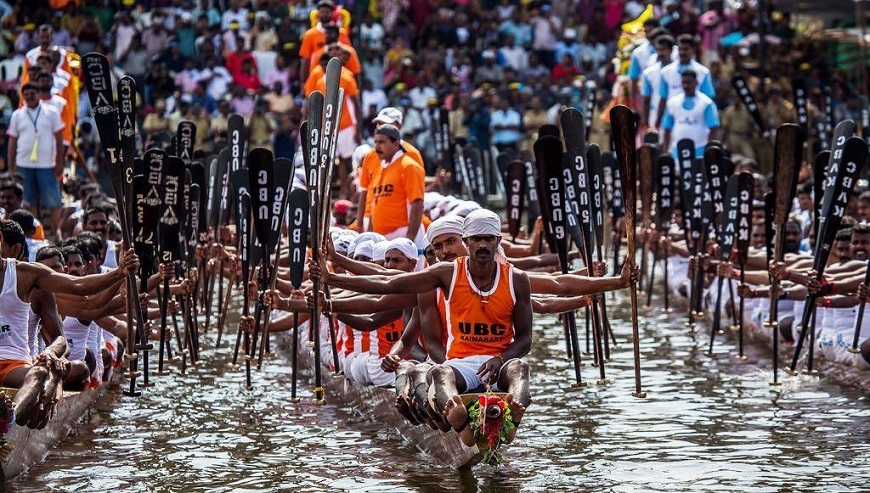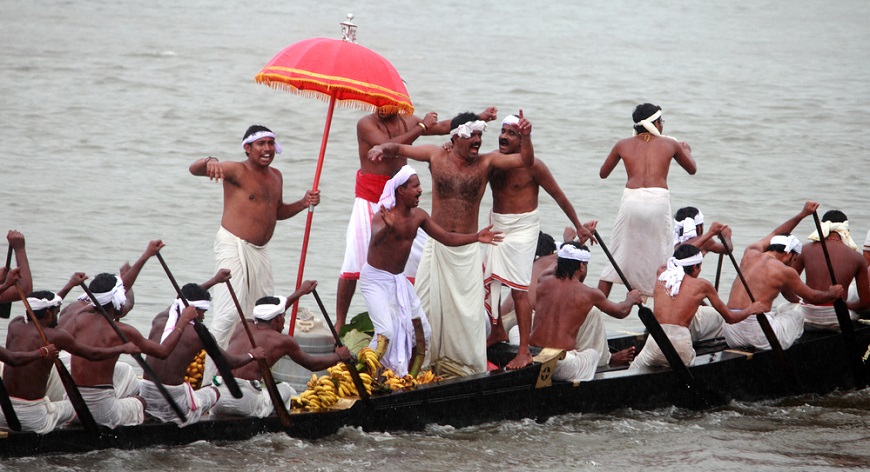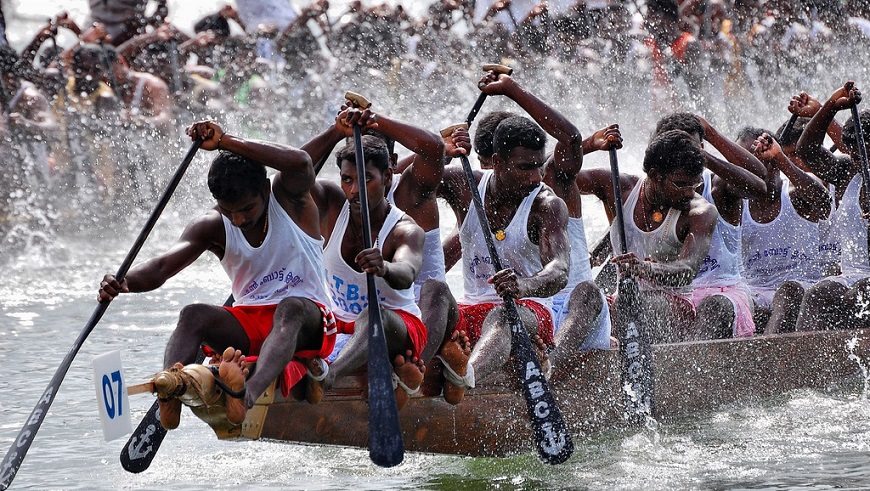Krushi-Kutumba: The Best Way to Explore Real Rural India
- February 20, 2020
- Blog
A farm is a place where you can find serenity and harmony. ‘Krushi’ in Kannada means Agriculture and ‘Kutumba’ means Family. Farming…
Read More
During the monsoon season, when the state of Kerala comes alive with the Onam festivities and the lush greenery unleashed by the rains, the famous Kerala Snake Boat Races are organised in the glorious backwaters and rivers of the region.
The Vallamkali Boat Race in Kerala is one of the most popular tourist attractions of the state that lures travellers from around the globe to the river banks, to cheer on the skilled oarsmen as they sail through the waters. Although the Vallamkali Boat Race is quite famous worldwide, there are several lesser known intriguing facts and legends associated with its history that add to its enticing charm.
Here is a closer look at what makes the snake boat races of Kerala one of the most outstanding team sports in the world.
 According to legend, the origin of the snake boat race dates back to the ancient times, when the head of the Katoor Mana, a Nambudiri family, stood on the banks of the river Pamba, praying to Lord Krishna and waiting for a poor man to pass by whom he could feed to complete his rituals. It is believed that Lord Krishna took the form of a ragged boy, whom the Brahmin proceeded to bathe and feed, before he disappeared and later made an appearance at the Aranmulla Temple. The Brahmin realised that the boy was an incarnation of God, and returned to the temple each year with food, along with a fleet of snake boats to guard the offerings. Thus began the appearance of Snake Boats in the river as others joined him in the ritual, and soon enough, the custom of the Snake Boat Race emerged.
According to legend, the origin of the snake boat race dates back to the ancient times, when the head of the Katoor Mana, a Nambudiri family, stood on the banks of the river Pamba, praying to Lord Krishna and waiting for a poor man to pass by whom he could feed to complete his rituals. It is believed that Lord Krishna took the form of a ragged boy, whom the Brahmin proceeded to bathe and feed, before he disappeared and later made an appearance at the Aranmulla Temple. The Brahmin realised that the boy was an incarnation of God, and returned to the temple each year with food, along with a fleet of snake boats to guard the offerings. Thus began the appearance of Snake Boats in the river as others joined him in the ritual, and soon enough, the custom of the Snake Boat Race emerged.
 The Vallamkali boat is a traditional canoe style boat which is the ancient war boat of Kerala. It is about a 100 feet long and can hold approximately 150 men. It has a long and slender wooden body with curled ends that are shaped like the hood of a cobra, hence the name Snake Boat. Each village takes pride in its own snake boat, and the villagers maintain it throughout the year and adorn it with decorations prior to the race. The embellishments added to the boat are considered as symbols of the prosperity of the town. The locals gather by the river on the day of the race to cheer on their team, because winning the race is a matter of prestige.
The Vallamkali boat is a traditional canoe style boat which is the ancient war boat of Kerala. It is about a 100 feet long and can hold approximately 150 men. It has a long and slender wooden body with curled ends that are shaped like the hood of a cobra, hence the name Snake Boat. Each village takes pride in its own snake boat, and the villagers maintain it throughout the year and adorn it with decorations prior to the race. The embellishments added to the boat are considered as symbols of the prosperity of the town. The locals gather by the river on the day of the race to cheer on their team, because winning the race is a matter of prestige.
 The actual races begin once prayers are offered to Lord Vishnu and Mahabali and the flowers from the Puja and placed in the boats. Around 30 boats elaborately decorated with adornments race on a stretch of water that is approximately 40 kms long. Each boat carries 125 oarsmen, the rest of the occupants being helmsmen and singers. The oars move to the rhythm of Vanchipattu, traditional songs that add to the music of the splashing water. Coordination between the team members is extremely important to prevent the boat from toppling. The winning boat gets to accompany the Palliodam, a boat that distributes food along the river banks as per an ancient tradition of Onam, painting a serene picture in the magnificent landscape.
The actual races begin once prayers are offered to Lord Vishnu and Mahabali and the flowers from the Puja and placed in the boats. Around 30 boats elaborately decorated with adornments race on a stretch of water that is approximately 40 kms long. Each boat carries 125 oarsmen, the rest of the occupants being helmsmen and singers. The oars move to the rhythm of Vanchipattu, traditional songs that add to the music of the splashing water. Coordination between the team members is extremely important to prevent the boat from toppling. The winning boat gets to accompany the Palliodam, a boat that distributes food along the river banks as per an ancient tradition of Onam, painting a serene picture in the magnificent landscape.
 Four major snake boat races and several other minor ones are held each Monsoon in and around Alleppey. The most popular one is the Nehru Trophy held at the Punnamada Backwaters, which is named after the first prime minister of independent India who was also an avid fan of the Snake Boat Races. Other spectacular races include the Champakkulam Moolam, the Payippad Jalotsavam, and the Aranmula Boat Race. There are several homestays and farmstays in the Alleppey region of Kerala that offer comfort, food, and a glimpse of the authentic Malayali culture to the travelers who visit the state to experience the electric atmosphere of the Snake Boat Race. These accommodations are the best places to immerse in the local culture and indulge in the traditional cuisine of the region.
Four major snake boat races and several other minor ones are held each Monsoon in and around Alleppey. The most popular one is the Nehru Trophy held at the Punnamada Backwaters, which is named after the first prime minister of independent India who was also an avid fan of the Snake Boat Races. Other spectacular races include the Champakkulam Moolam, the Payippad Jalotsavam, and the Aranmula Boat Race. There are several homestays and farmstays in the Alleppey region of Kerala that offer comfort, food, and a glimpse of the authentic Malayali culture to the travelers who visit the state to experience the electric atmosphere of the Snake Boat Race. These accommodations are the best places to immerse in the local culture and indulge in the traditional cuisine of the region.
The Snake Boat of Kerala is not just an iconic symbol of an age old tradition that is deeply embedded in the local culture but is also a constant reminder to the locals regarding the importance of team spirit and of moving with the flow of the natural forces.
The rituals associated with the Vallamkali Boat Race encourage the natives to participate in charity, to take pride in their community, and to pay homage to the magnificence of the water bodies that bless their land. In this manner, the Vallamkali Boat Race is the best way for the travelers to understand the principles that define the cultural heritage of the majestic state of Kerala.